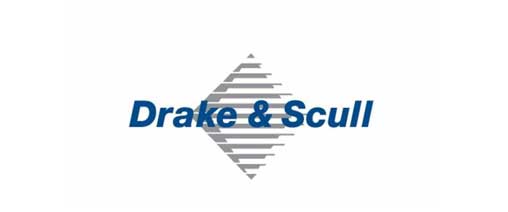In Today’s Digital World, Our Data Is Priceless. Whether It’s Personal Memories, Financial Records, or Business-Critical Documents, Losing Data Can Be Devastating. Yet, What Makes the Situation Worse Is Not Always the Loss Itself, but the Wrong Steps People Take Afterward. Many Users, in Panic, Unknowingly Make Mistakes That Reduce the Chances of Successful Recovery.
To Help You Avoid Falling Into This Trap, Here Are the Top 5 Mistakes People Make After Data Loss And How You Can Protect Your Files the Smart Way.
Mistake 1: Continuing to Use the Device
The Most Common Mistake After Data Loss Is Continuing to Use the Affected Device. For Example, If Your Laptop Drive Fails or You Accidentally Delete Files, Many Users Keep Working on It. Every New File Written to the Drive Can Overwrite the Lost Data, Making Recovery Impossible.
What to Do Instead:
-
Stop Using the Device Immediately.
-
Disconnect External Storage Drives If They Malfunction.
-
If It’s Your Phone, Switch It to Airplane Mode to Prevent New System Updates or Downloads From Overwriting Data.
Mistake 2: Attempting DIY Repairs Without Knowledge
It’s Tempting to Try Fixing the Problem Yourself by Opening the Hard Drive, Downloading Free Recovery Tools, or Watching Tutorials Online. Unfortunately, This Often Makes Things Worse. Opening a Hard Drive Outside a Cleanroom Exposes It to Dust, While Using the Wrong Recovery Software Can Corrupt the File System Permanently.
What to Do Instead:
-
If the Data Is Important, Avoid DIY Methods Beyond Basic Troubleshooting.
-
Only Use Trusted Recovery Software for Minor Logical Errors.
-
For Physical or Complex Issues, Consult Professional Recovery Experts.
Mistake 3: Ignoring Strange Warning Signs
Hard Drives and Storage Devices Usually Show Warning Signs Before Complete Failure. Clicking Noises, Frequent Crashes, Slow Performance, and Corrupted Files Are All Red Flags. Many People Ignore These Signs Until the Drive Fails Completely, Making Recovery More Complicated and Expensive.
What to Do Instead:
-
Pay Attention to Error Messages and Strange Noises.
-
Run Diagnostics Tools That Check Drive Health (SMART Monitoring).
-
Back Up Your Files Immediately If You Suspect the Drive Is Failing.
Mistake 4: Using Unreliable or Free Recovery Software Blindly
While Data Recovery Software Can Sometimes Help, Many People Download the First Free Tool They Find Online Without Checking Its Reliability. Some Tools May Be Outdated, Ineffective, or Worse—Contain Malware That Puts Your System at Greater Risk.
What to Do Instead:
-
Research and Use Trusted, Well-Reviewed Recovery Tools.
-
Always Make a Clone of the Failing Drive Before Running Recovery Software.
Perhaps the Biggest Mistake of All Is Not Having a Backup Plan. Without a Backup, Recovery Becomes Much Harder and Sometimes Impossible.
What to Do Instead:
-
Follow the 3-2-1 Backup Rule:
-
Keep 3 Copies of Your Data.
-
Store Them on 2 Different Types of Media.
-
Keep 1 Copy Offsite or in the Cloud.
-
-
Use Automated Backup Solutions So You Never Forget.
-
Regularly Test Your Backups to Ensure They Work.
How to Handle Data Loss the Right Way
-
Stay Calm: Panicking Leads to Rushed, Risky Decisions.
-
Stop Using the Device: Prevent Further Damage by Shutting It Down.
-
Assess the Situation: Is It Logical Loss (Accidental Deletion, Corruption) or Physical Failure (Clicking Noises, Overheating)?
-
Choose the Right Solution: Use Trusted Software for Minor Issues, or Professional Services for Major Failures.
-
Plan for the Future: Set Up Backups and Monitoring Tools to Reduce Future Risks.
FAQs Data Loss Mistakes
Q1. Can I Recover Data If I’ve Already Used the Device After Losing Files?
It Depends. If the New Data Has Overwritten Old Files, Recovery Becomes Difficult. However, Partial Recovery May Still Be Possible With Professional Tools.
Q2. Is Free Recovery Software Safe?
Not Always. Some Free Tools Work for Minor Issues, but Many Can Damage Your Files Further or Even Infect Your System With Malware. Always Research Before Downloading.
Q3. Why Should I Avoid Opening a Hard Drive at Home?
Hard Drives Are Extremely Sensitive. Even Tiny Dust Particles Can Destroy the Platters and Permanently Erase Your Data. Professional Labs Use Cleanrooms for a Reason.
4. The Biggest Mistake Is Continuing to Use the Device and Overwriting Lost Files. This Drastically Lowers the Chances of Recovery.
Q5. How Do I Make Sure I Never Lose Data Again?
Set Up a Reliable Backup System Using the 3-2-1 Rule.
Final Thoughts
Data Loss Is Stressful, but Mistakes Made Afterward Can Turn a Recoverable Situation Into a Permanent Disaster. Avoiding the Top 5 Mis takes Co tinuing Device Use, Risky DIY Repairs, Ignoring Warning Signs, Using Unreliable Software, and Neglecting Backups Will Significantly Improve Your Chances of Getting Your Files Back.
When in Doubt, Always Consult a Certified Data Recovery Expert Who Has the Right Tools and Environment to Safely Retrieve Your Data. And Remember, Prevention Is Better Than Cure—So Put a Backup Plan in Place Today to Protect Your Digital Life.
-
Data Loss Mistakes
-
Common Data Recovery Mistakes
-
How to Recover Lost Data Safely
-
Top Mistakes After Data Loss
-
Avoid Overwriting Deleted Files
-
Best Way to Recover Deleted Data
-
Professional Data Recovery Services
-
Prevent Permanent Data Loss
-
Data Backup Strategies
-
Why Free Recovery Tools Fail
















